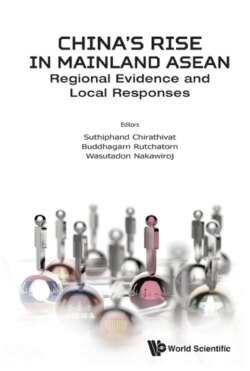Читать книгу China's Rise in Mainland ASEAN - Группа авторов - Страница 15
На сайте Литреса книга снята с продажи.
1.3.Conclusion
ОглавлениеSummarizing the 13 contributions to this volume, China’s rising influence in mainland ASEAN may be described as a bundle of past experiences and “upcoming” scenarios. A plausible augmented role of China as the “hydro-hegemon” of the Mekong River Basin is a possible avenue for sub-regional cooperation that, asymmetrical, though it is, needs to be taken up with great care in mainland ASEAN. No wonder the Lancang–Mekong Cooperation scenario, which was recently established, has brought about coverage of areas and action plans, while the countries concerned are still in doubt about this broad cooperative mechanism. As for implications and responses, trans-border human mobility and its impact could be part of the BRI China’s outbound policy with a new wave of Chinese migrants. This is the case in point for Thailand, and it could also happen elsewhere in the Southeast Asian region. China’s influence in Cambodia, Laos, and Myanmar has far reaching implications for ASEAN’s sovereignty and its collective action, in addition to the efforts of each country to deal with a rise in economic standing, foreign policy, and social adaptation.
The recent changing landscape of China’s rise in mainland ASEAN is clearly shown in trade, investment, and even the external debt, in which regard the Southeast Asian countries have come to rely on increasingly with China (The World Bank, 2009).1 Vietnam’s perspectives on these aspects are clearly shown in the complexity that there would be if the country were swept into such increasing trends. The Lao cases on FDI are also interesting, both in terms of its determinants and policies and, in particular, the mining sector. These have made been possible with connectivity and integration, a result of ASEAN and China linkages that have become more closely knitted, through China’s own BRI and each of ASEAN’s opening up policies.2 A review of Dian-Viet Railway described in detail along with its metaphorical past, from the French colonial era, has tremendously helped to imagine the human factor for this cross-passing border. If that is the way to the future, more land logistics and transportation from Southern China will be connected to the mainland Southeast Asian region. This will also include the upcoming trends and challenges of e-commerce from China to the whole landscape of ASEAN, with different players, from firms and consumers down to policymakers, becoming much more involved.
This volume aims to fill a gap in knowledge and understanding about country and regional experiences in dealing with China’s rising influence. It takes the complete perspective from local experts in each region. The attempts were part of the Bangkok Conference at Chulalongkorn University in 2018, which suggested the topics and content of this volume merit dissemination to a larger and wider audience in the form of publication. In the process, it raises issues and major questions for fact finding and future research.
